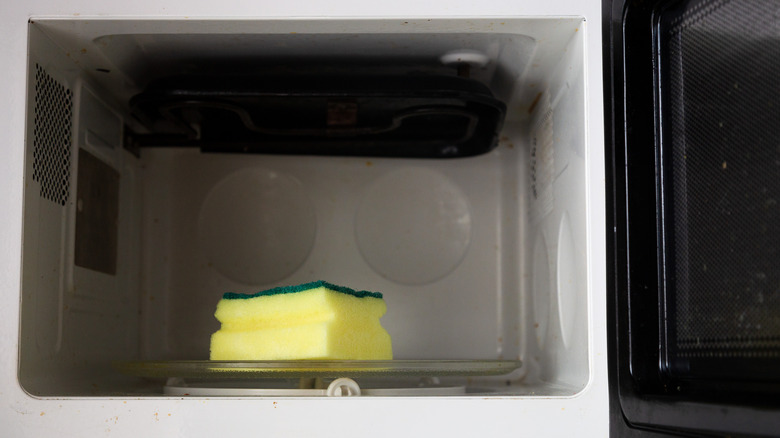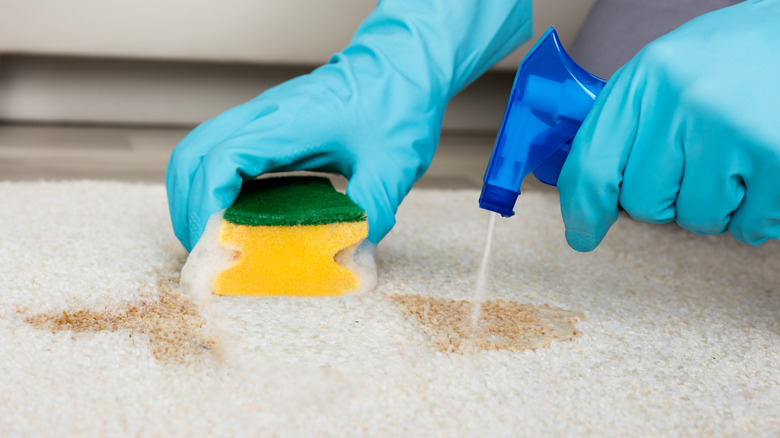How To Make Your Sponges Last
You may have heard that a kitchen sponge is one of the home's dirtiest items, and Blueland says this is true. In a research study, 45 billion bacteria were found per square centimeter of a kitchen sponge. Sponges used to clean your home's bathroom, and other surfaces may be just as filthy.
To reduce bacteria and keep your family healthy, you should clean your sponges regularly. However, even with regular cleaning, your sponges should also be replaced once every two weeks, per Merry Maids. If you use a standard sponge, it probably contains some plastic, although it's mostly made of cellulose, per Mama Eco. This means that it isn't fully biodegradable, and if you throw away your sponge every two weeks, you'll go through quite a few each year. That's why it's essential to know how to make your sponges last. It will also be helpful to know how to repurpose a dirty, worn sponge after the two weeks elapse.
How to maintain your sponges
The most effective way to clean a sponge is by soaking it in a mixture of bleach and water, then wringing it out, per Time. This method will kill most of the bacteria. Another way to clean your sponge is by heating it in the microwave. However, be sure to thoroughly wet the sponge before doing this to avoid a fire. Merry Maids says that heating a sponge in the microwave for one to two minutes will kill most of the bacteria living inside it. Finally, you can place your sponge in the dishwasher with your dishes to clean it.
The worst thing you can do for your sponge is keep it in the bottom of your sink because it will never dry, and bacteria will continue to inhabit it. To maintain it, keep your sponge on a drying rack. Also, after using your sponge, make sure to rinse it and wring out any extra water. If you want your sponge to last up to a month, try purchasing one made of microfiber, as they dry faster and don't grow as much bacteria.
How to repurpose worn sponges
However, once a cellulose sponge starts to look worn or has been used for more than two weeks, it's time to repurpose it. There are a number of exciting ways to repurpose a worn sponge, per Recycle Nation. You could use your sponge for lesser jobs around the house, like scrubbing the floors or cleaning up after a pet. An old sponge can also become a fun tool to paint towels or planters with.
If your sponge is extensively worn out, you could use it to apply shoe polish to shoe scuffs. You could also cover drainage holes in planters with small pieces of a cut-up sponge. If you garden or landscape frequently, wrap old sponges around the handles of tools to avoid blisters. Finally, you could soak an old sponge in peppermint oil and place it in the corner of your home to deter mice from entering.


